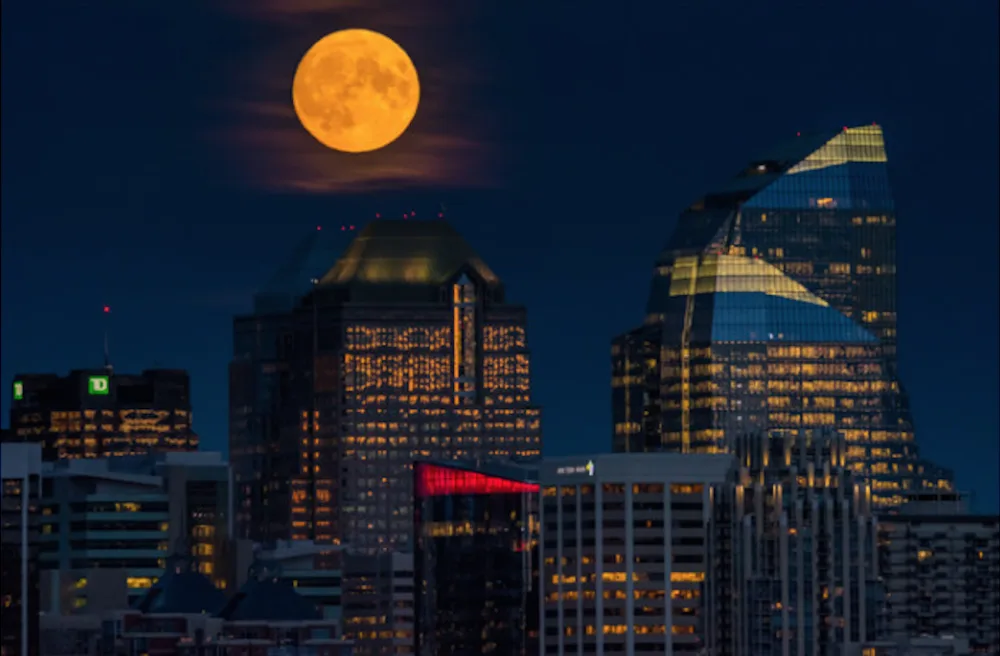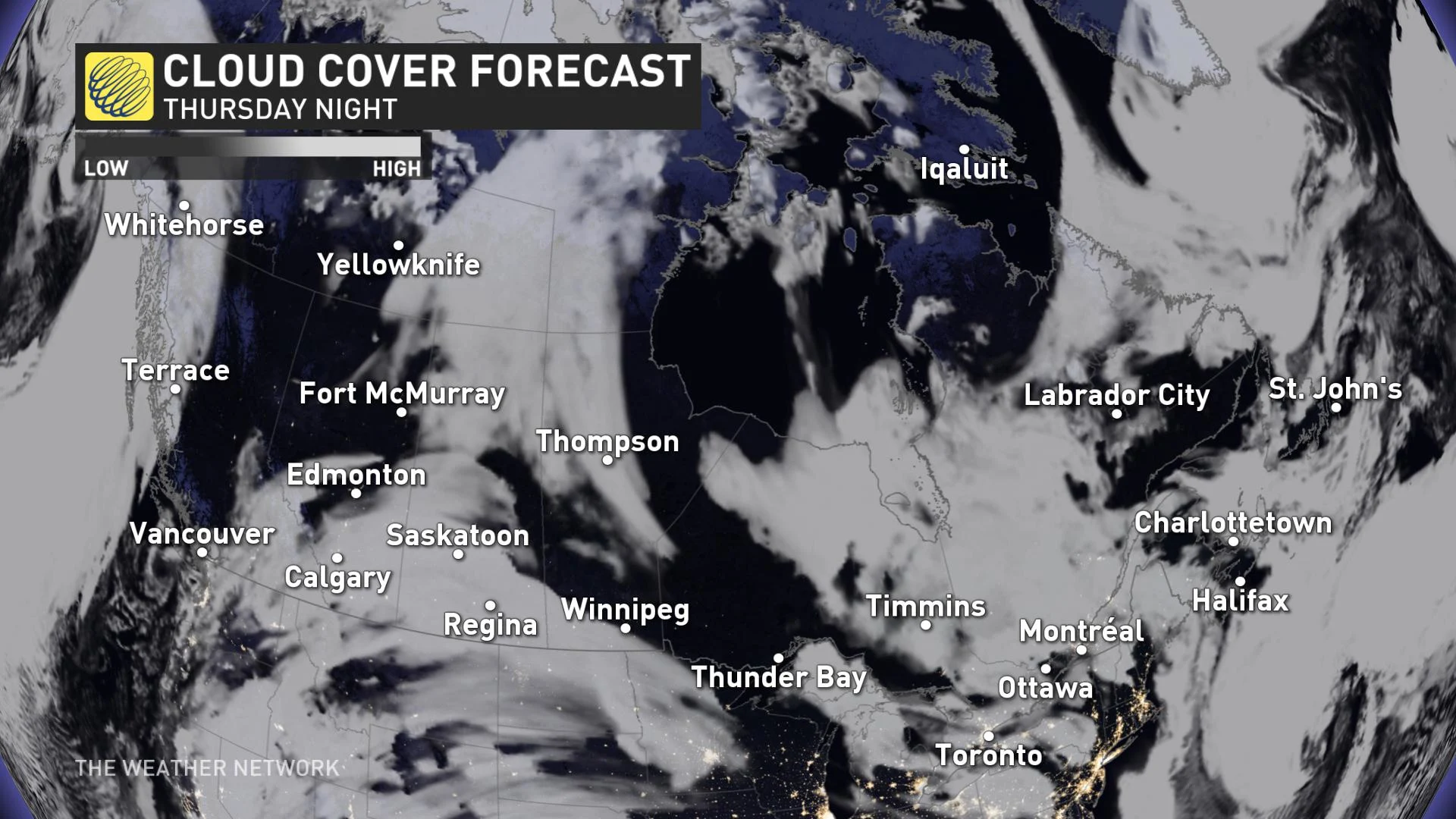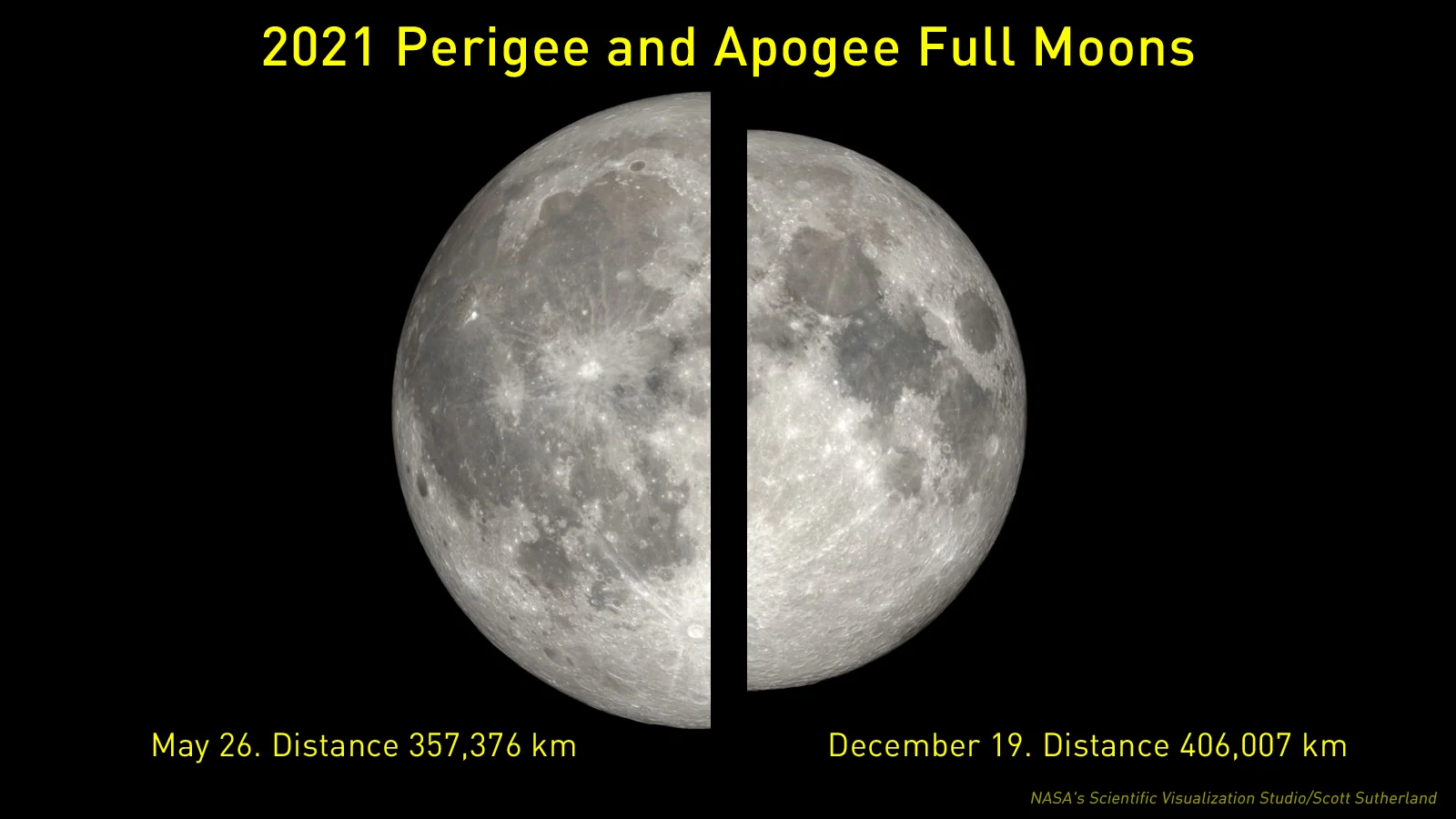
Three cool Full Wolf Moon facts for Thursday night skywatchers
The first Full Moon of 2021 will shine in the sky this week!
Thursday night around sunset, look to the eastern horizon to see the rising of the Wolf Moon — the first Full Moon of 2021.
As it is with us constantly as we travel through the universe, we may the Moon for granted sometimes. Thursday night, spare a moment if you have clear skies, to pause and take in the splendid sight of our celestial companion.
Will you see it, though? Here is the cloud cover forecast across Canada for Thursday night.

The Moon will be up all night, of course, from sunset to sunrise. Double check your forecast on our the website or on our app, just to be sure you'll have reasonably clear skies before you bundle up to go out.
WHAT IS THE WOLF MOON?
According to The Old Farmer's Almanac, there are several names for the first Full Moon of the year. Wolf Moon is the most popular, but they also list several other names, including Center Moon, Cold Moon, Greetings Moon, Hard Moon, Severe Moon, and Spirit Moon.
As the Almanac says: "The howling of wolves was often heard at this time of year. It was traditionally thought that wolves howled due to hunger, but we now know that wolves use howls to define territory, locate pack members, reinforce social bonds, and gather for hunting."

This graphic collects all the relevant data about each Full Moon of 2021, including their popular names, whether they are a 'super' or 'micro' moon, a perigee or apogee Full Moon, and whether they are remarkable in some other way (ie: Blue Moon or Harvest Moon). Credit: NASA's Scientific Visualization Studio/Scott Sutherland
Many of these Full Moon names are simplifications or translations of names from First Nations peoples, such as the Sioux (Wolves Run Together), the Assiniboine (Center Moon), the Cherokee (Cold Moon), the Abenaki (Greetings Maker Moon), the Lakota (Hard Moon), the Shawnee (Severe Moon), and the Chippewa & Ojibwe (Great Spirits Moon).
Read more: Why is the Supermoon so compelling to us?
AN AVERAGE FULL MOON
There's often talk of 'supermoons' and 'micromoons' when discussing the various Full Moons of the year. These nicknames are based on a Full Moon's apparent size in our sky. With the Moon tracing an elliptical orbit, rather than a perfect circle, its distance to Earth (and thus its size in our sky) changes throughout the month, and even month to month.

Although it is sometimes difficult to notice the apparent size difference of the Moon, this comparison graphic shows just how much larger May 26th perigee 'super' Full Moon will be than the December 19 apogee 'micro' Full Moon. Credit: NASA's Scientific Visualization Studio/Scott Sutherland
Not this time, though.
The January 2021 Wolf Moon is about as average of a Full Moon as you can get. Although the Moon's distance varies between 356,400 km and 406,700 km, its average distance is around 384,400 km. Look up at the Moon on Wednesday night, at around 9 p.m. EST — when it will be just a tiny sliver away from Full — and you will be seeing it at a distance of 384,440 km away.
When the Full Moon rises on Thursday night, it will already have slipped about 3,200 km closer to Earth, but it will still be at a very average distance of 381,241 km.
RELATED: SEE EVERY VIEW OF THE MOON FOR 2020 IN LESS THAN 5 MINUTES
Read more: Eyes to the skies! Don't miss these beautiful winter astronomical events
THE MOON ILLUSION
The Full Wolf Moon may be totally average this year, but our brains probably will not register that fact to start. This is due to a little trick of our mind known as The Moon Illusion.
We gauge the size and distance of something based on comparing that object to other things directly around it. The Moon technically doesn't have anything directly around it, at least not that we can perceive with the naked eye. However, our brains still try to put the Moon into perspective by comparing it to objects in the foreground of our field of view — trees, buildings, etc. Fitting the Moon into that perspective, we perceive it as much larger than it actually is.

This Full Moon rose over Calgary, AB, on September 13, 2019. Credit: Siv Heang
You can try a couple of tricks of your own to cancel out this effect. Stretch your arm out and cover the Moon over with your thumb, or even your pinky finger. After a while, check out the Moon again, when it is higher in the sky and it appears smaller, repeat this. You'll see that the Moon is actually exactly the same size.
Looking at the Moon through a cell phone camera can help, too, since the lens and your cell phone screen tend to cancel out the effect (although it doesn't completely go away). You can also take a few pictures while you're at it!










